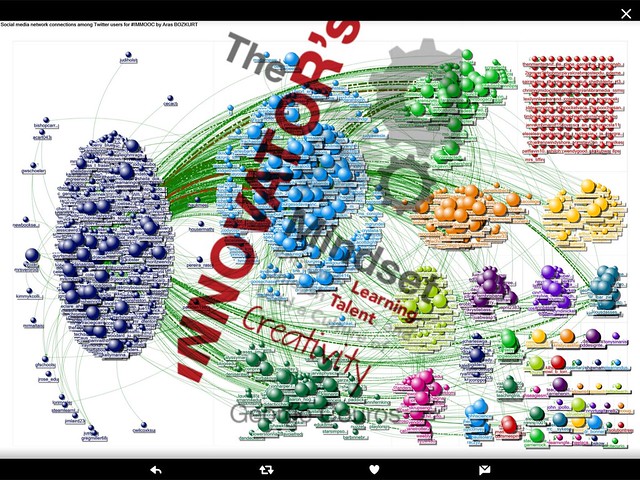If you missed last weekend’s second #IMMOOC (Innovator’s Mindset MOOC) hangout, I have it sitting in Vialogues (a collaborative video annotation tool), just waiting for your insights and reactions. Seriously. You’re invited to comment as you watch the hangout session.
And I’m still hoping to get more people on the IMMOOC Map to fully represent the IMMOOC. The numbers show nearly 2,000 participants (I think I saw that number in the Tweet stream) and wouldn’t it be cool to see all of us on this map, together? Right now, we cluster on North America, but I think we have a larger representation of the world than the map shows right now.



Hi Kevin,
Great to see how you’re pointing at three types of network building and analysis in this article. I started to take an interest in NodeXL a year ago. I’ve posted a few articles showing how the maps might be used. Here’s one. https://www.nodexlgraphgallery.org/Pages/Default.aspx?search=immooc
In addition, you and I have pointed to the Google maps showing who participates in #clmooc, to show how people might connect to each other if they live in the same area, and how people from around the country and the world are connecting via these cMOOCs. The maps also show that too few people from big city/urban areas are enrolled in these education focused cMOOCS, or are not placing themselves on the map.
The Vialogues are just another type of annotation that you, Terry Elliott and others are introducing.
I keep sharing this on my Twitter feed, Facebook G+ and blogs with the goal that more people from Chicago and other cities will get involved, and more people involved in non-school youth development programs, including donors, will get involved.
So far I don’t see it happening, but that does not mean it’s not happening some place, or won’t happen if we keep showing examples.
As to the NODEXL, there is a lot of data in these maps, but not a lot of time for most of us to dig through and make sense of it. Perhaps it’s something students might take a look at?